Visitor’s Guide On How To Use Tram Transport around Barcelona City Centre
Page Content
This page provides essential information about the tram system in Barcelona called “El Tram”. Barcelona’s trams can be spotted all around the city – they are green and white and travel at about the same speed as a car. Barcelona’s tram system seems to be less well-known or used than the bus of metro systems. However, it can be a quick and convenient way to get around the city.
| Barcelona Tram |
This page covers the information that you will need to use Barcelona’s trams – how to buy tickets, where you can buy them from and how much they cost; the routes and timetables of the trams; accessibility for limited mobility travellers; rules on the trams and how to use the service.
Tram Tickets
What types of tickets?
It is possible to buy a single ticket for the tram. Alternatively you can buy the tickets known as ‘Integration Tickets’. These are tickets that can be used on the metro, bus and trams in Barcelona. The most likely of these that you may want to buy during your holiday is the T-Casual. This ticket is valid for ten journeys on the bus, tram or metro and is valid for an extended period. For a full guide to the T-Casual card, see our Guide to the Barcelona Metro. The T-Casual can be purchased for various zones, but if you are just planning to spend your time in the city of Barcelona, you will only need to buy a ticket that covers Zone 1 where the main tourist attractions are based.
You can also use the Barcelona Card for travelling on the tram. See below for more details of the Barcelona Card.
For a guide to the tickets available, it is best to check the official tram website.
Where can I buy tickets?
| The Tram Ticket Machines |
If you are buying the single ticket for the tram, this can be purchased from the ticket machines that are located at each tram stop (see below for the tram routes).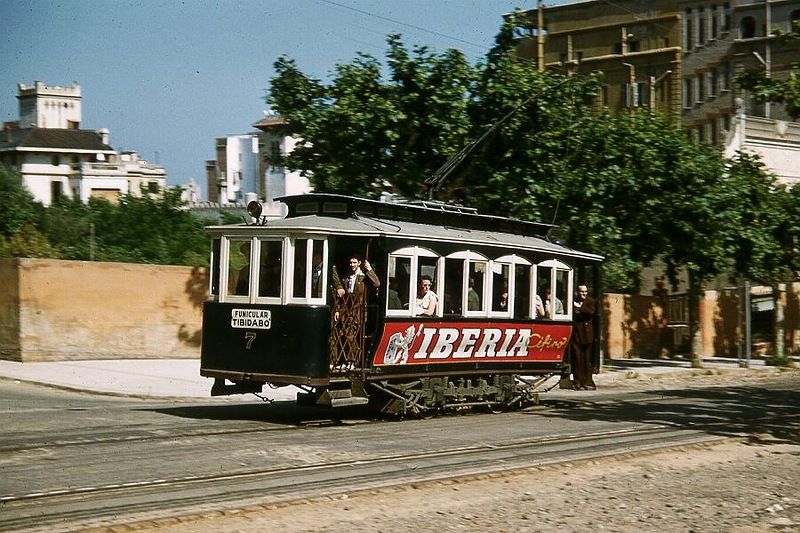
The T-Casual and other ‘Integration tickets’ (see above for more details) are also available at the ticket machines at the tram stations, however they can also be purchased at all of the metro stations and at tobacco shops around Barcelona known as “Tabacs”.
How much do tickets cost?
Single ticket: €2.40
T-Casual: €11.35
(for Zone 1)
If you are travelling with a child of under 4 years, you will not need to buy them a ticket. It may be worth having some form of evidence with you to prove the child’s date of birth, such as a photocopy of their passport.
|
Did you know you can enjoy unlimited travel on Barcelona public transport for 2, 3, 4 or 5 days?
Click to learn more |
Using the Barcelona Card on the tram system
A Barcelona Card can be used on the Tram service.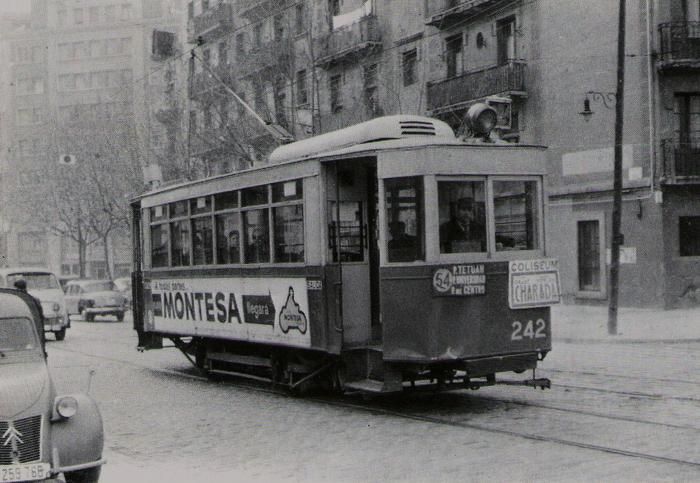
Unlimited transport around Barcelona city centre Zone 1: Free
How do I use my ticket for the tram?
| Ticket validation machine on board the Tram |
Once you have purchased your ticket you will need to validate it to ensure that you have paid for your journey. At points all along the tram you will see machines (see photograph) where your ticket can be validated. You will need to push your ticket into the machine where it will punch it and return it to you.
At three of Barcelona’s tram stations there are barriers at the entrance. These are all on the T5 line (see below for details): Espronceda, St.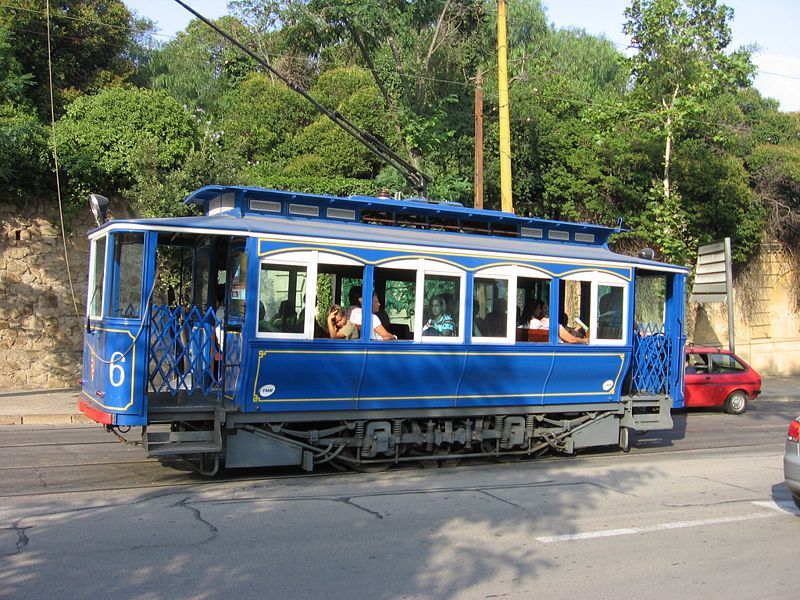
It is important to make sure that you have a valid ticket for the tram, that you have validated it and that you have bought the right kind of ticket (see above for more details). There is a fine on the trams for travelling without a ticket or with a ticket that hasn’t been validated.
Fine: €100.00
Tram journeys
What routes do the trams take?
The trams are available on a total of six routes. There are three routes called ‘Trambaix’: T1, T2 and T3. The other three routes are ‘Trambesos’: T4, T5 and T6.
For full maps showing where these routes cover, it is best to check the Official Tram website.
How long does a journey last?
The length of time between stops varies. However, in general, there is an average of two minutes between each stop.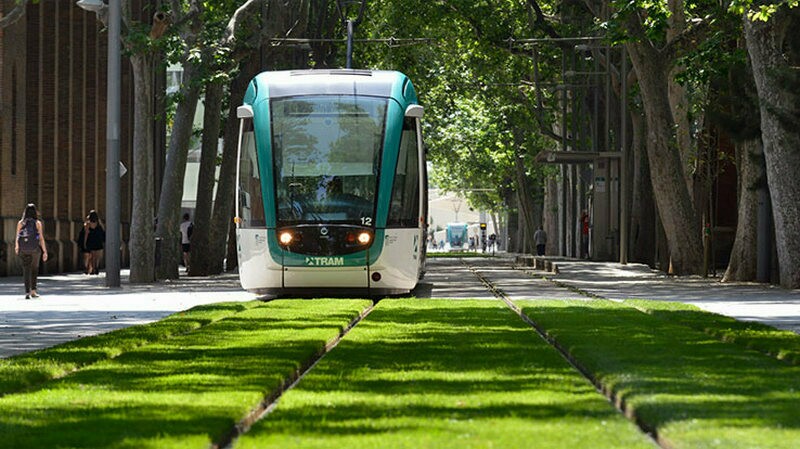
Tram timetables
Operating hours
Trains generally travel four times per hour during the busy hours and two times per hour early in the morning and late at night. You can look up timetable information on the following link.
El Tram Barcelona timetable
Operating hours: 05:00 – 00:00 Midnight
Also on the official tram website if you look under the ‘Lines, Timetables and Ticket’ section you can add in the start and end station for your journey, the date of travel and the time frame in which you wish to travel. It will give you all of the options for that journey, during the time period that you want it.
Access for people with a disability to the trams
| Area for wheelchair users and prams on-board the Tram |
The trams are well designed for limited mobility travellers.
Contact details
Tram Helpline
Tel: +34 90 070 1181
The tram helpline is open at different times throughout the year.
Monday – Friday: 09:00 – 19:00
July and August: Monday – Friday: 08:00 – 15:00
Rules on the trams
Pets are not allowed on the trams unless they are guide dogs or are small enough to fit inside a pet transport container.
Eating and smoking on the trams is not allowed.
There is space on the trams for wheelchairs, bicycles and prams.
The Barcelona tram system is an enjoyable way to see the city. It covers areas that are not on the metro or bus routes.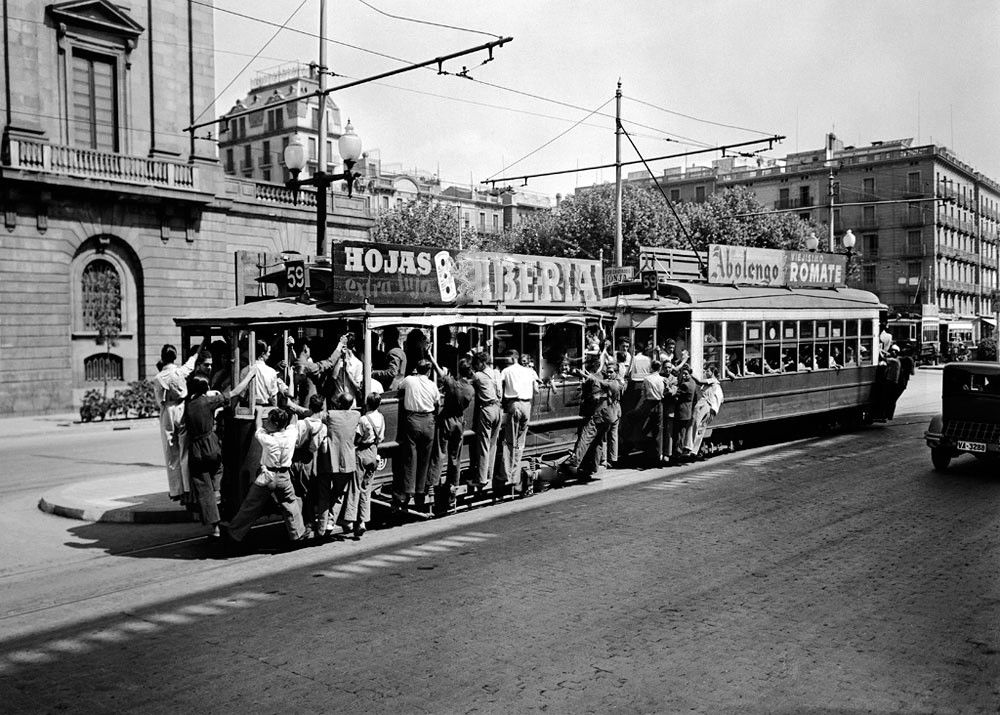
Barcelona Blue Tram – Tramvia Blau – Prices and Times
Barcelona’s Blue Tram (Tramvia Blau) was inaugurated in 1901 to connect Avenida Tibidabo railway station with the Tibidabo Funicular.
From mid-twentieth century, Barcelona’s trams were mostly substituted by buses. Tramvia Blau were the only streetcars that were kept.
Heritage Streetcars
Barcelona’s heritage trams have been running up and down the hilly district of Sarrià-Sant Gervasi (Tibidabo) for over one hundred years, allowing both locals and tourist to enjoy a unique experience.
- Tram nº 2: The oldest streetcar in Barcelona.
It was inaugurated in 1901 when the first tram line was opened to the public. Since it is so old it only runs on very special occasions.
- Tram nº 129: This tram is known as “la Jardinera” (Gardner). It is an open car which is only used in summer. It is the only streetcar painted in red instead of the typical blue.
- Trams nº 5, 6, 7, 8 and 10: Built in 1904, these are the most emblematic streetcars that you’ll see running on the blue line. Even though some of these have been renovated, their motors and controls are still the original pieces.
How to Get to the Tramvia Blau?
- Hop-on, Hop-off tourist bus: Tramvia Blau – Tibidabo stop.
- Buses: 17, 22, 58, 73, 75, 126, 131 and 196.
- Metro: Avinguda Tibidabo, line 7.
Times and Prices
The Blue Tram has various operating hours depending on the season:
Timetable
- 2 January to 24 March: Saturdays, Sundays and public holidays from 10 am – 6:15 pm.
- 25 March to 7 April: Saturdays, Sundays and public holidays from 10 am – 7:30 pm.
- 8 April – 17 April: every day from 10 am – 7:30 pm.
- 18 April – 23 June: Saturdays, Sundays and public holidays from 10 am – 7:30 pm.
- 24 June – 11 September: Every day from 10 am – 7:30 pm.
- 12 September – 27 October: Saturdays, Sundays and public holidays from 10 am – 7:30 pm.
- 28 October – 31 December: Saturdays, Sundays and public holidays from 10 am – 6:15 pm.
Prices
- Single ticket: € 5.50 (US$ 6)
Blue Tram
1See photo gallery
Cable Cars
Boat Cruises
You may also be interested in
-
Cable Cars
One of the best experiences in Barcelona is to see the city from the air on a cable car.
Find out all their routes, prices and schedules.
-
Boat Cruises
The Golondrinas are tourist boats that cruise along the charming coastline of Barcelona. A different way to explore Barcelona.
Guide for tourists to use trams in the center of Barcelona.
Page Content
This page provides information about the tram system in Barcelona called “El Tram”. Trams in Barcelona can be found everywhere – they are white and green and move at about the same speed as cars. It seems that the tram system in Barcelona is not as well known and popular as the buses and metro. However, the tram is a fast and convenient means of transportation around the city.
| Barcelona tram |
This page provides essential information about using trams in Barcelona – how to buy tickets, where to buy them and how much they cost, tram routes and timetables, accessibility for the disabled and rules for using trams.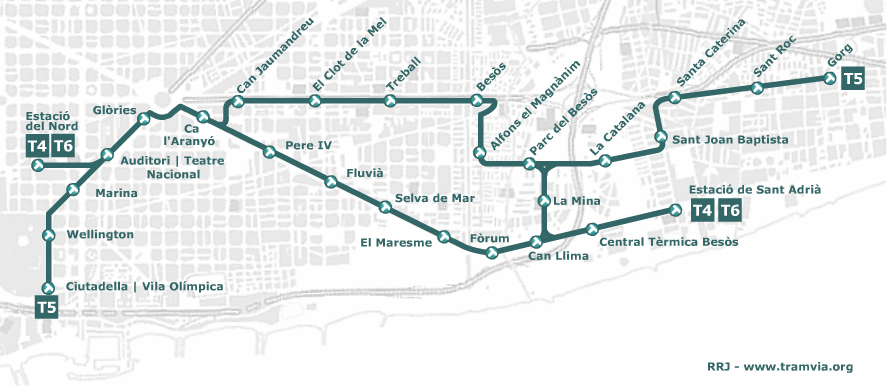
Tram tickets
What types of tickets are there?
You can buy a simple tram ticket. And you can also buy a ticket known as the “Single Travel” With such a ticket in Barcelona, you can ride the metro, bus and tram. Your best bet is to buy a T-Casual pass. It is designed for 10 trips by bus, tram or metro, and is good for a long time. A complete guide to the T-Casual card can be found in the Barcelona Metro User Guide. It is possible to buy a T-Casual for different zones, but if you plan to spend time in the center of Barcelona, you need a pass that only covers Zone 1, which contains the main tourist attractions.
You can also use the Barcelona Card to travel by tram. See below for details on the Barcelona Card.
The list of available types of tickets can be found on the tram’s official website.
Where are tram tickets sold?
| Tram ticket terminals |
If you need a simple ticket, you can buy it at the tram ticket terminals located at all tram stops (tram routes are listed below).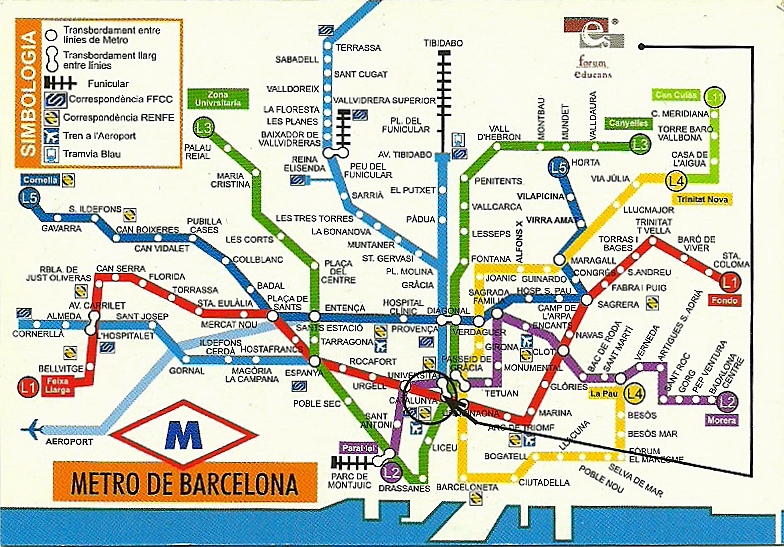
T-Casual and other “Common Passes” (see above for more details) can also be bought at the terminals at the tram stops, plus they can be bought at all metro stations and in tobacco shops throughout Barcelona known as “Tabacs”.
How much are the tickets?
One way ticket: €2.40
T-Casual: €11.35
(for zone 1)
Children under 4 do not need a ticket. A copy of the child’s passport with date of birth can be useful in case you need to prove his age.
Tram travel with Barcelona Card
The Barcelona Card can be used for trams. By purchasing the Barcelona Card, tourists will have unlimited access to Barcelona public transport within zone 1, as well as discounts or free admission to certain museums, shows or tours.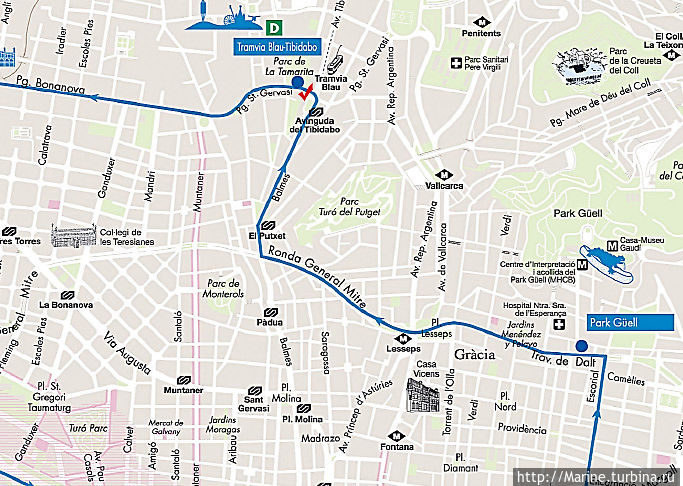
Unlimited travel in Barcelona zone 1 (city centre): Free
How to use the tram ticket?
| Control device (validator) in the tram |
After purchasing your ticket, you will need to validate it to prove that you paid the fare. In the tram you will see special devices (see photo) that validate the ticket. The ticket will need to be inserted into a device that will break it.
Three tram stops in Barcelona have turnstiles at the entrances. All of them are located on the T5 branch (more details below) Stops Espronceda, St.Marti de Provençals and Besos. You do not need to validate your ticket on the tram after boarding at these stops, as you will already do this at the entrance.
It is important to have a valid ticket that you have validated. The ticket must be of the correct type (more on that later).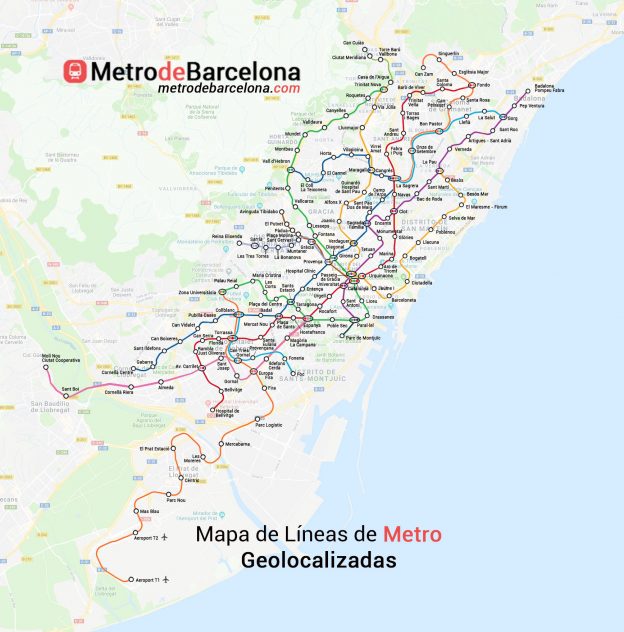
Fine: €100.00
Tram ride
What routes do trams run on?
There are six tram routes in total. Three routes are called “Trambaix”: T1, T2 and T3. The other three are called “Trambesos”: T4, T5 and T6.
The full route map is best checked on the tram’s official website.
How long is the tram ride?
Travel time between stops varies. However, in general, the average travel time between stops is 2 minutes. So, if you, for example, drive 5 stops, then it will most likely take 10 minutes.
Tram timetable
Opening hours
In general, trams run four times an hour during peak hours and twice an hour early in the morning and at night. The schedule can be viewed at the link.
Barcelona tram timetable “El Tram”
Hours: 05:00 – 00:00 midnight
Also on the official website of the tram in the section “Lines, Timetables and Ticket” (Routes, timetables and tickets) you can enter the start and end points of the journey, the date and time of the trip.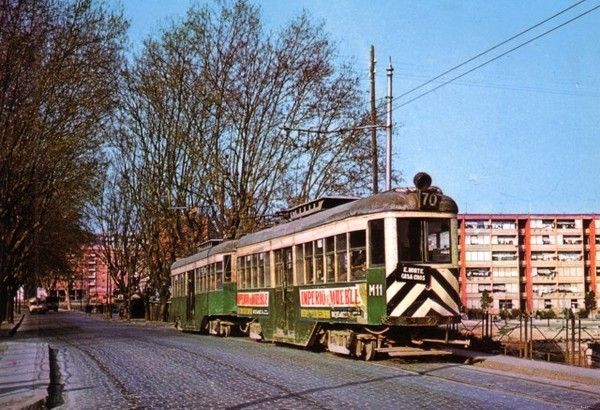
Facilities for people with disabilities in the tram
| Places for wheelchairs and prams |
Trams are well designed to carry people with reduced mobility. The tram has special doors with a wheelchair badge (see photo). Wheelchairs and electric scooters pass through these doors. The tram is on the same level as the platform at the stop and there is not much gap between them. All tram cars have a designated space for a wheelchair or electric scooter.
Contact details
Tram Help Desk
Tel.: +34 90 070 1181
The information desk operates at different times throughout the year.
Monday – Friday: 09:00 – 19:00
July and August: Monday – Friday: 08:00 – 15:00
Rules for using the tram
Pets are not allowed on the tram. Exceptions are made only for guide dogs and animals placed in special carriers.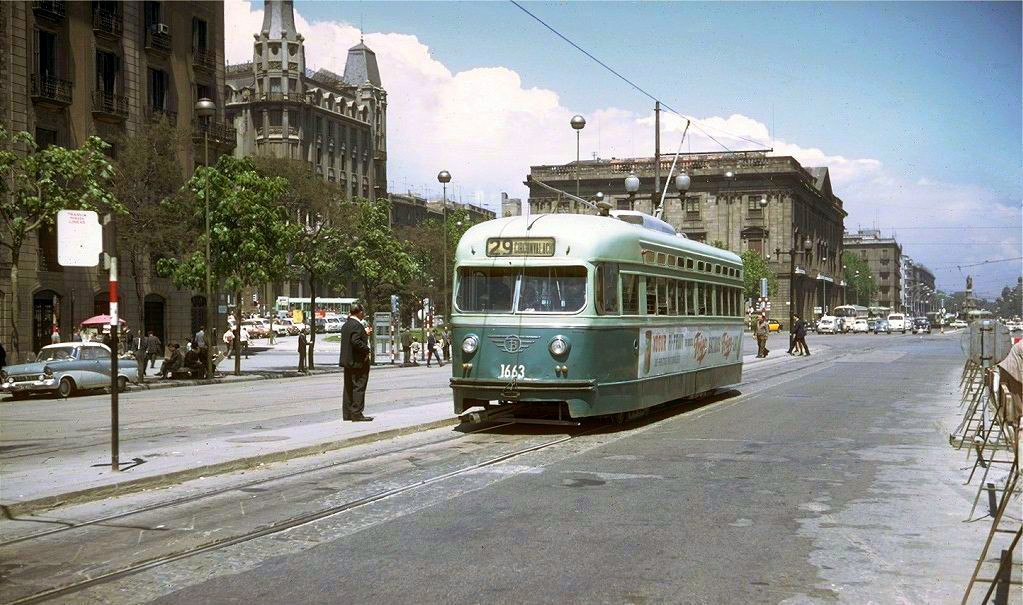
It is forbidden to eat and smoke on the tram.
Trams have spaces for wheelchairs, bicycles, and prams.
Barcelona’s tram system is an enjoyable way to see the city. Trams go to places where the metro or buses do not go. The trams are great for seeing the city, plus they are spacious and can carry wheelchairs, bikes and luggage. If you are planning to travel by trams, we advise you to print this article so that all the necessary information is at your fingertips.
Barcelona Trams: Lines, Routes, Tickets – Barcelona10
Barcelona trams are not only an environmentally friendly form of transport, but also a cheap way to see the streets of the city, almost every one of which is a work of art. Local trams look very futuristic both outside and inside, although there is one historical tram that is very fond of tourists. The routes pass both through the city center and in those quarters where a rare tourist comes, so you have the opportunity to open your own Barcelona.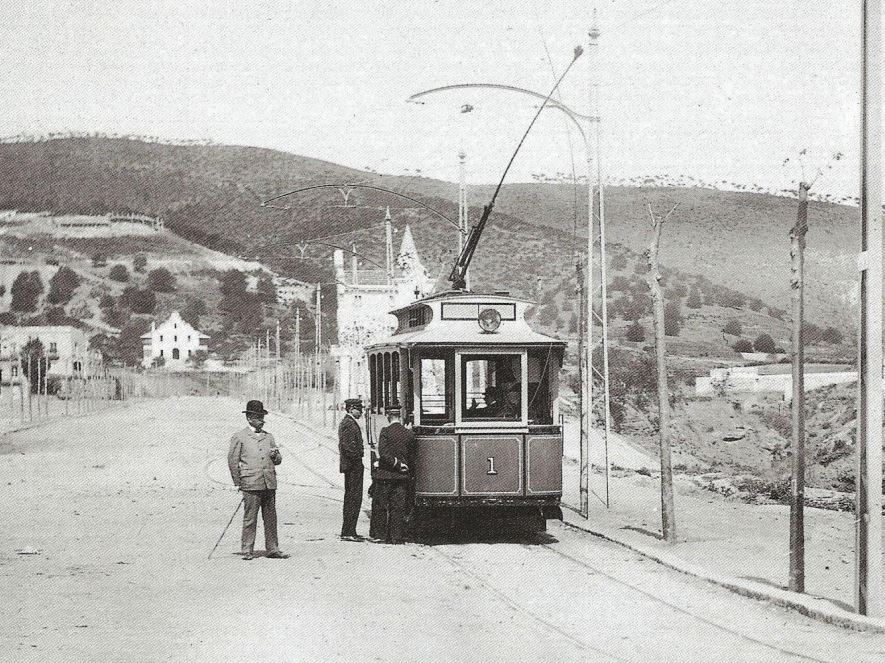
1
Tram routes in Barcelona
2
Tram tickets
3
Schedule
4
blue tram
Barcelona tram lines
There are 6 tram lines in Barcelona. It is very easy to distinguish them, because in their name after the letter “T” there is a number. Lines under the general name Trambaix are located in the southwestern part of the city, Trambesos – in the northeast.
Trambaix trams
Trambaix trams leave from the Francesc Macià stop located on Diagonal Avenue. The nearest metro station is 10 minutes walk and is called Hospital Clinic. From the terminus of all these lines, in about 15 minutes you can reach the Avinguda de Xile stop, which is closest to the legendary Camp Nou stadium of FC Barcelona.
Tram route T3 ends with another site associated with the famous football club.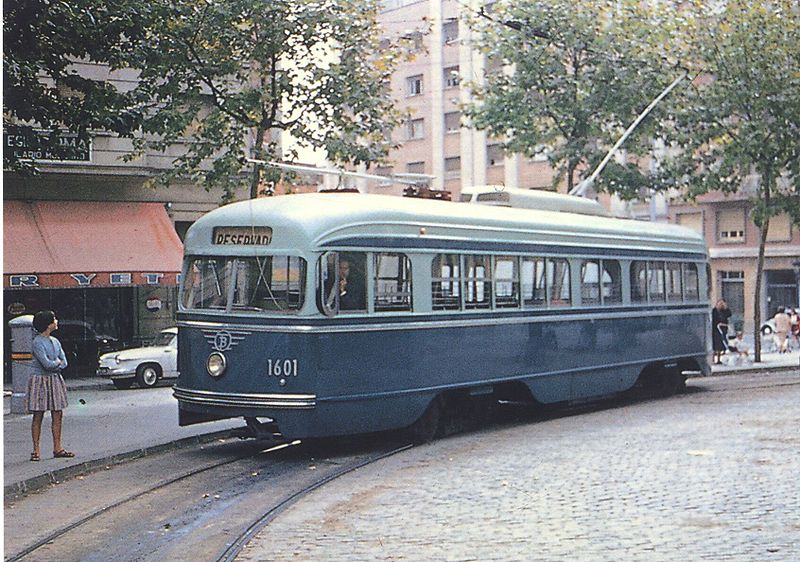
At the T2 tram terminus, Llevant-Les planes, is the Parc de la Fontsanta, created in 1995. Here you can find original sculptures that are often found in the Catalan capital, playgrounds, areas for skaters and other sports. There are free range areas for animals. In general, the park is intended for family recreation and fairs.
On the T1 route, there are no views that are especially noteworthy for tourists, but it is very convenient for residents of the town of Cornella de Lobregat, which is almost part of Barcelona, passes through those points that no other type of public transport captures.
Trambesos
The T4 trams start their route from Ciutadella Park at the stop of the same name. T5 and T6 – from the Glories stop near the Agbar Tower, which is remembered by tourists for its cucumber shape.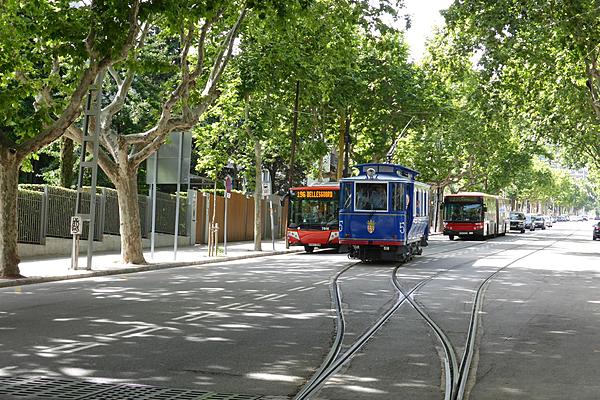
On the T4 you can pass the area of Sant Marti and reach the port of Forum. Here in 2004 the World Forum of Cultures was held. Now the place is used for various events and concerts. But it’s also nice to just walk around. Everything around is reminiscent of another planet from films about the future, and this impression is complemented by the buildings around, built as if also in order to meet alien guests with honor.
If you follow this route or T6, you can see one of the four famous Catalan rivers – Besos and end your journey in a city near Barcelona, it is called Sant Adria de Besos.
The last point of the T5 route is also no longer in Barcelona, but in the city of Badalona. If you get off there, you can look at the Olympic Pavilion, located just a five-minute walk, or at the Parc de Turo Caritg, which is a ten-minute walk from the bus stop.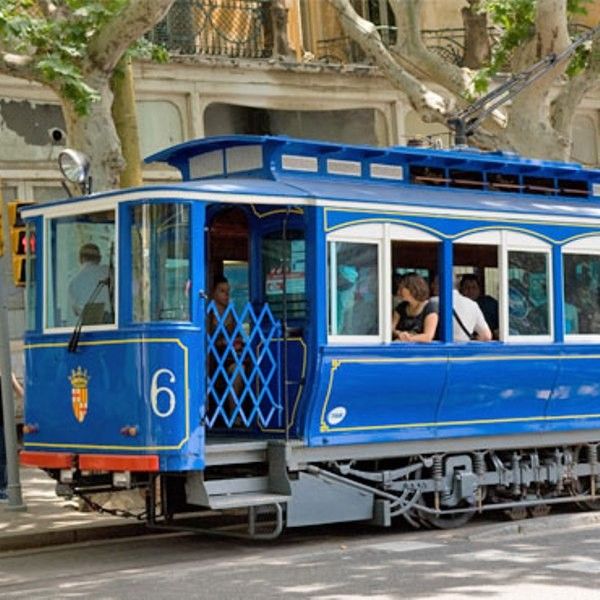
» READ ALSO – Ciutadella Park in Barcelona
Tram tickets
Barcelona trams cost 2.4 €. The ticket is a special card, which is sold in the corresponding terminal at each tram stop of any route.
Important: you can pay for a ticket at the terminal only with a bank card or coins, paper banknotes are not accepted.
Another feature of Barcelona trams is that within 30 minutes you can change to trams of any other lines without buying a new ticket.
A single pass is also valid for travel, allowing you to use the metro and bus. For example, the most popular T-casual ticket among tourists for 10 trips. You can buy it at any subway station, the cost is 11.35 €. The Holla BCN transport card and the Barcelona discount card are also valid for travel.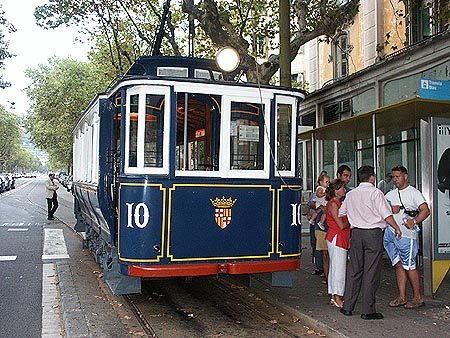
» READ ALSO – Which ticket to buy in Barcelona for public transport?
Children under 4 years old travel free of charge on trams. But you still need to punch your card again in the terminal near the first door, it will print the date and time. When using any public transport in Barcelona, never throw away tickets until the end of the trip, otherwise you will have to pay the controllers, who sometimes visit, a fine of 100 euros.
Timetables
Due to the fact that trams are by no means the main transport, they run every 15 minutes during the so-called rush hours in Barcelona, and once every 30 minutes early in the morning and late in the evening. From Monday to Thursday and Sunday, the lines operate from 5 am to 24 am, and on Fridays and Saturdays the last trains leave at 2:00.
Blue tram
We should also mention a special line. The blue tram in Barcelona (Tramvia Blau) is a historical landmark, it was launched already in 1901.
The history of the Blue Tram is quite interesting. In Barcelona lived such a pharmacist Salvador Andreu i Grau, he was better known as Doctor Andreu. It was he who made the honey-flavored cough syrup and lozenges for which he became famous. Andreu wanted to build a garden city in the upper part of Barcelona, including an amusement park (tickets for it can be bought here). And to get there, a private tram was launched from the metro, and a funicular lifted people up. Over time, personal initiative has become an important part of the city.
The blue tram is part of the funicular system and connects metro line 7 with the funicular on Mount Tibidabo. Traveling by tram and taking the funicular to the highest point in the city, you will make a popular tourist route. The tram moves, of course, very slowly, but this has its own plus – you can see the houses and streets of the avenue.

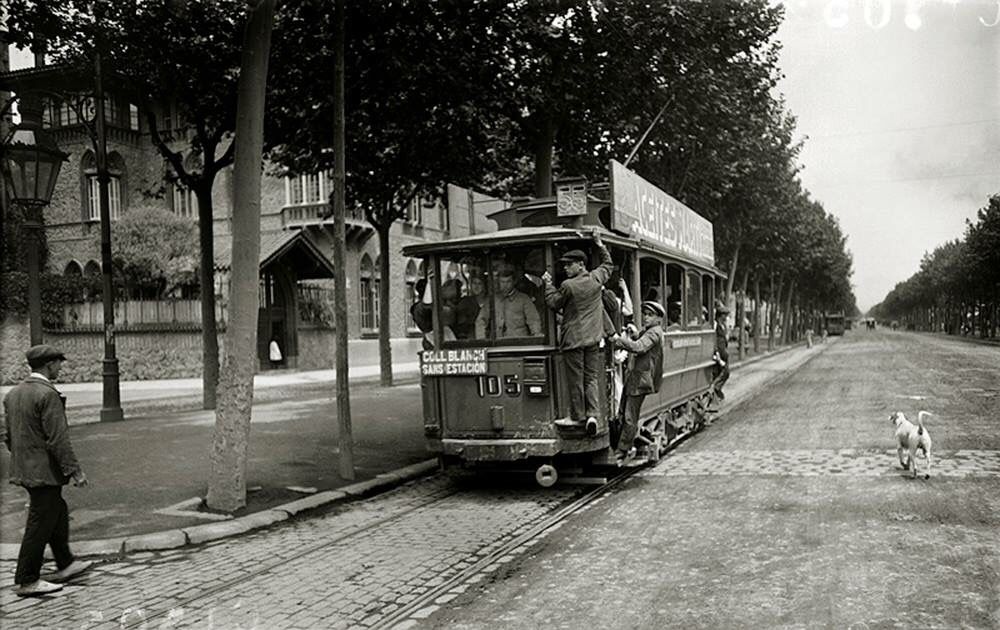 It was inaugurated in 1901 when the first tram line was opened to the public. Since it is so old it only runs on very special occasions.
It was inaugurated in 1901 when the first tram line was opened to the public. Since it is so old it only runs on very special occasions.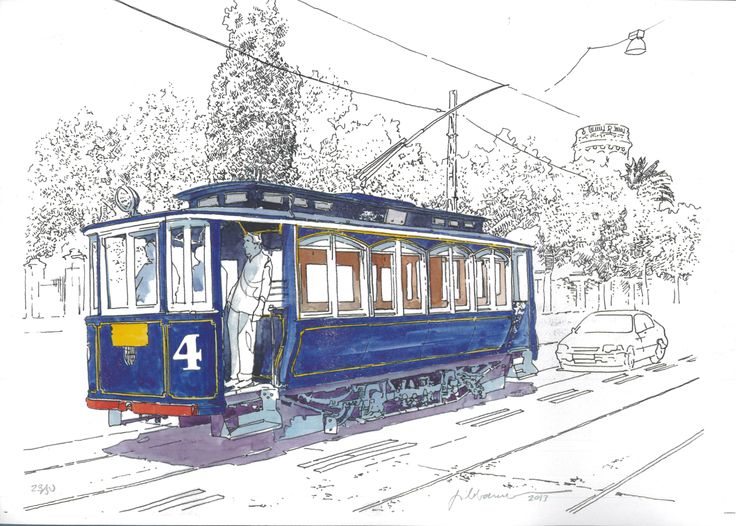
 Find out all their routes, prices and schedules.
Find out all their routes, prices and schedules.
